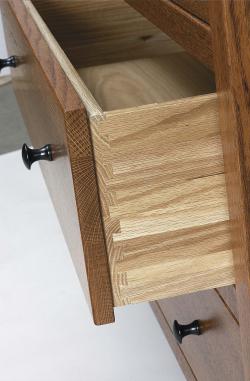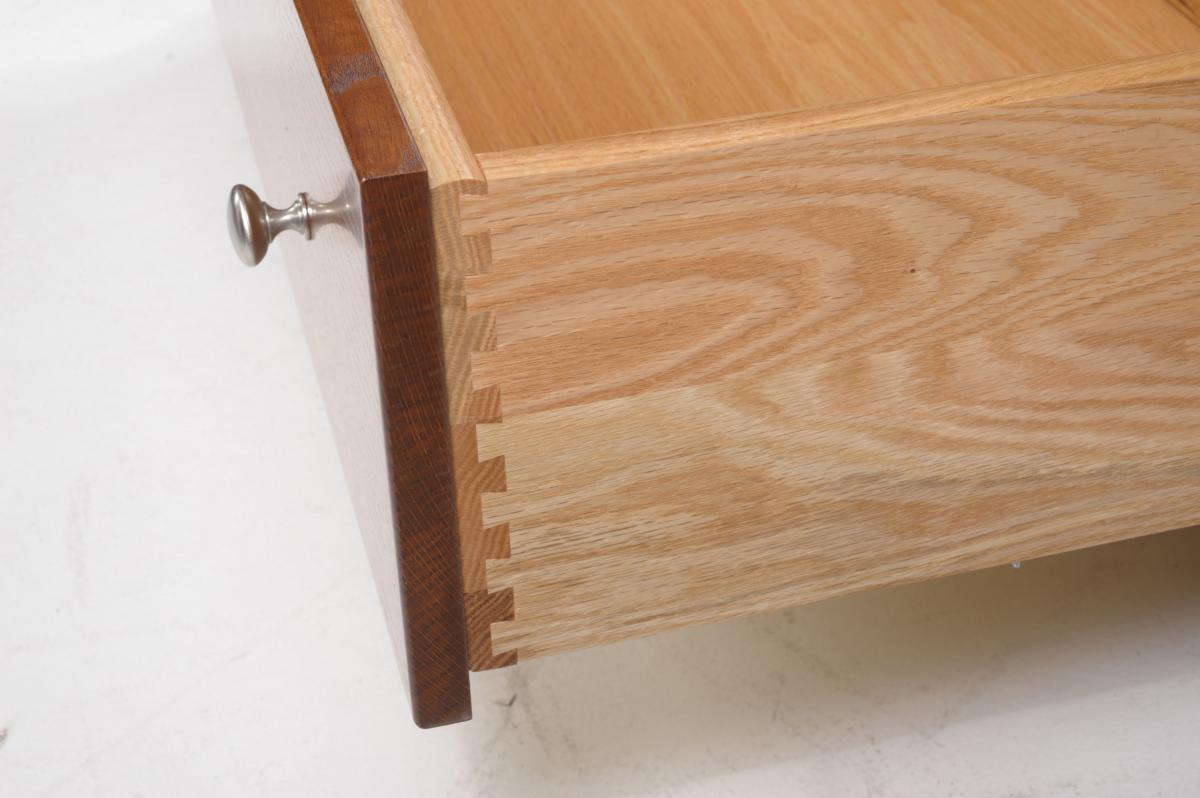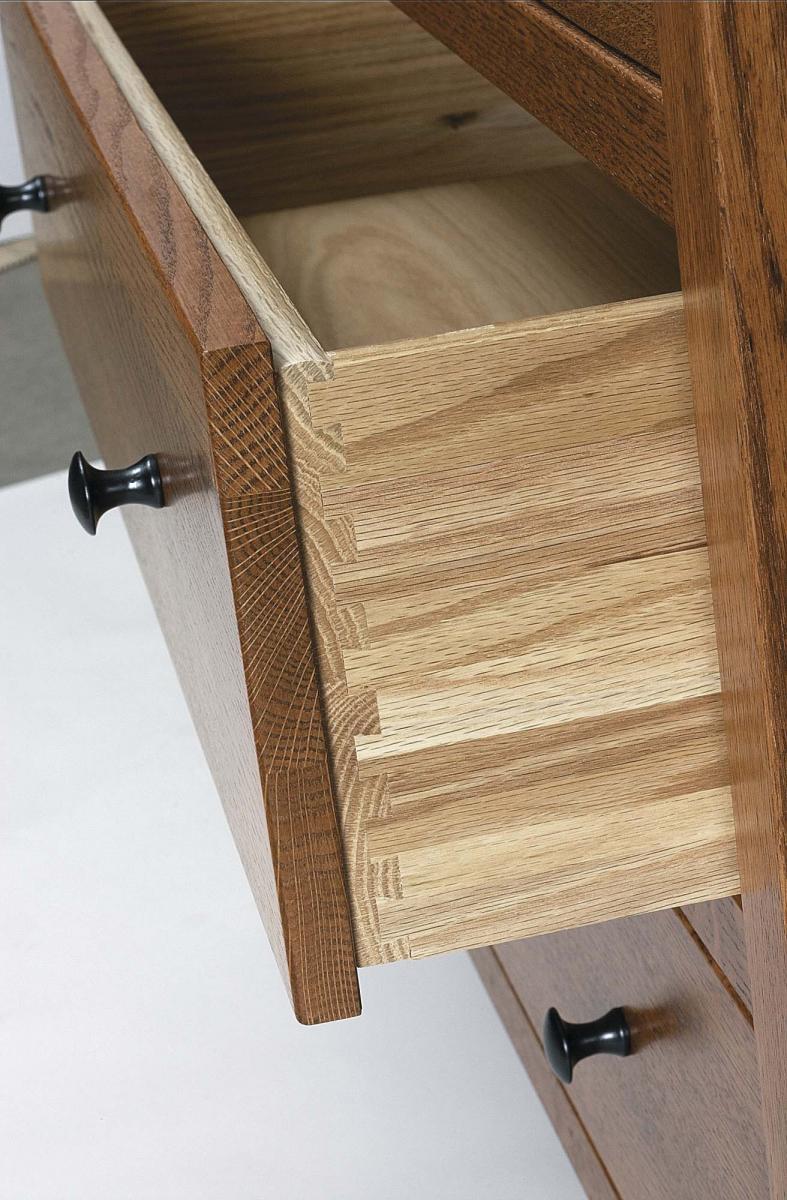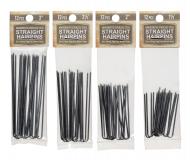Dovetailed Drawers "Really that Important?"
Submitted by Amish Valley Pr... on Tue, 09/18/2012 - 7:25am

Dovetail Joints in Amish Furniture
By: Mike DeHaan
What does the term “Dovetail joint” mean? Where should you look for a dovetail joint? Why is it an important feature in quality furniture?
Introduction to Dovetail Joints
“Joinery” is the art and science of constructing joints in wood furniture. More broadly, “joints” are any places where two objects “join”. For example: your elbow joins your upper and lower arm bones; masonry joins stones; and of course there are “joints” in wooden boxes or wagons or pieces of furniture.
A “dovetail joint” is one of the best ways to join two sides of a box. Each mated side board has a pattern of wedges cut along its edge. The hole, where the wood has been removed, is the “tail”. In the mated board, the remaining wood is the “pin”. Slotting the pins into the tails will lock the edges together.
The shape of a dovetail joint is not a simple square or rectangle. Instead it is shaped like a wedge, or perhaps you should think of it as “fanning out like a dove’s tail”.
This shape makes it difficult to pull apart the joint after the box has been put together, “except in the direction the pins were first inserted”.
As well, dovetail joints provide a lot of surface area for glue. After all, the length of the cut-out is much longer than the straight end of the board.
These joints do not require screws or dowels. This can be important for the overall appearance of the finished piece of furniture.
Depending on the way the joint is constructed, the joint can be completely hidden, or exposed to view.

Ohio amish handcrafted Dovetailed Drawer
Where to Look for Dovetail Joints
A dovetail joint has some important advantages for specific types of carpentry:
Dovetail joints are strong to resist being pulled apart after repeated pulls or pushes. A drawer provides a perfect example.
Dovetail joints are strong to resist being deformed by a continuous load. An entertainment stand that holds a television is one example.
Properly constructed dovetail joints resist being harmed by changes in humidity. If both pieces have the grain aligned correctly, then both pieces experience expansion or shrinkage at the same time and to the same degree. Otherwise, one piece may crack or the joint might loosen.
These joints can be very subtle, or deliberately highlighted, depending on the designer’s intentions.
Although there are quite a few variations of dovetail joints, here are three common types.
The “Through Dovetail” exposes the ends of both pieces. Seeing the end grain makes it obvious that the joint is a dovetail.
The “Half-Blind Dovetail” can be recognized by the visible end grain on the side but not from the front, while the “Blind Dovetail” does not expose any end grain. These are much more difficult to find.
So the answer to “Where should I look for dovetail joints?” is: where two flat wooden surfaces join at right angles (90 degrees), especially if that joint is subject to stress.
By the way, it’s worth noting that some joints do not qualify as dovetails. The “Box” joint has square “fingers and slots”, rather than tapered pins and tails. Without the tapering, box joints have less mechanical strength than dovetail joints, but still have a lot of area for glue. “Butt” joints merely fasten the end of one piece to the side of another; such a joint needs reinforcement with screws, glue blocks or dowels. “Mitre” joints are used at the corners of picture frames; they need extra work, such as “biscuits” or “splines” to support any weight or stress. “Dado”, “spline” and “lock” joints are just a few of the other types of joints used in making a “case” or box, such as a drawer or cabinet.
A Picture of a Dovetail Joint is Worth a Thousand Words
In this picture of an open drawer, first notice that the outside faces of the wood have a dark stain. The interior wood is lighter and shows the grain. The “side edge” of the drawer that we see has its grain running left-right in the image.
Notice that this edge does not attach directly to the front of the drawer. Instead, there is another board flat against that front, inside the drawer. This “inside board” is also a light color, like the other interior wood. It’s a bit shorter than the outside front of the drawer.

Dovetailed Drawer Detail
The dovetail joints are visible on the side edge that we see, and exactly as deep as the width of the “inside board”. These joints are most visible where the slightly darker “front board” contrasts with the lightest portions of the “side edge”.
Why Dovetail Joints are Important for Fine Furniture
Fine furniture is distinct from the simply functional because of the greater beauty and longer expected lifespan.
Dovetail joints are important for drawers for both reasons. This type of joint is mechanically strong because of the shape, and affords more surface area for the glue to help with adhesion. Both the intrinsic strength and the safeguards against shrinkage, as noted above, will help the drawer last longer.
Cheaper drawers need added fasteners, such as screws or glue blocks. These detract from the beauty of the item. As well, there is some chance that screws will loosen where there is repeated stress such as pulling and pushing.
Fine joinery is also proof of attention to detail. If one aspect is just slapped together, then it is likely that the whole project is rushed or haphazard. Was the wood aged and properly dried before being worked? Were the stain and finish properly applied?
Why do the Amish use Dovetail Joinery?
The Amish have made a name for themselves in furniture manufacturing by insisting on high standards of craftsmanship.
After several generations as farmers, many began to find that farmland was too expensive for young families to buy. However, they wished to continue living as their religious faith required: in small rural communities, keeping themselves apart from most modern conveniences.
Many Amish have developed skills in carpentry, and applied themselves to making furniture in small, family-operated workshops.
Ohio Woodshop Business
Their emphasis is on high quality, rather than mass production. They take the notion of hand-crafting seriously. Their focus is to do their best work, and thereby provide value to their customers.
A mass-production factory’s design allows for the construction of hundreds of “cookie cutter” items, using homogenized materials such as particleboard or pressboard. Drawers with box joints or butt joints are easier and faster to put together; just add a few screws and a glue box and hope it remains secure.
The Amish approach with handcrafted dovetail joints takes longer to make; but the result should last much longer. And, it looks better.
The Amish manufacture furniture in a variety of styles, such as Contemporary, Mission and Shaker. These styles lend themselves to high quality, solid wood construction that includes dovetail joints where appropriate.
Further Reading about Joinery and Dovetail Joints
These links may be helpful whether you are shopping for furniture or interested in carpentry.
“Dovetail” at http://www.woodworkdetails.com/knowledge/joints/case/dovetail discusses a variety of dovetail joints. Overall, the site has a wealth of information for woodworking enthusiasts.
“The Elegance of Amish Oak Furniture” at http://www.thefreelibrary.com/The+Elegance+of+Amish+Oak+Furniture-a01073... describes the history and process of Amish carpentry in a quite elegant manner.
“Shaker Furniture is Practical Christianity in Wood Furniture” at http://suite101.com/article/shaker-furniture-is-practical-christianity-i... covers similar ground.




